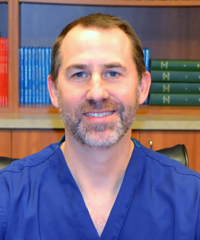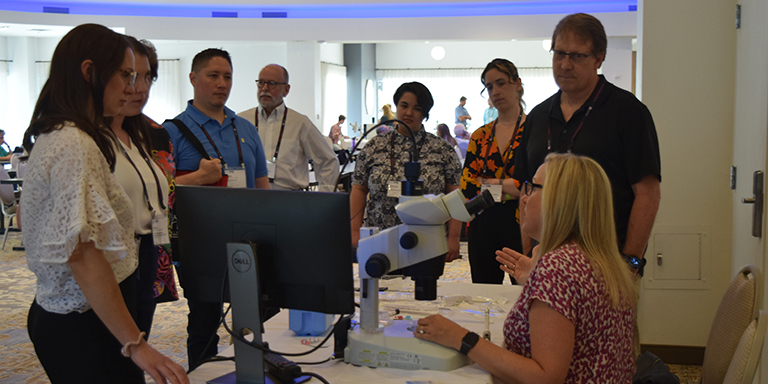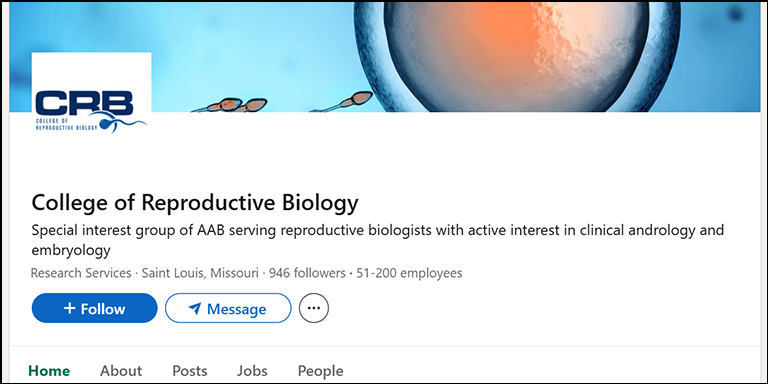Annual Meeting Report: CRB 2014
 |
| Mark PD Dow, Ph.D., HCLD(ABB) |
This year’s 18th College of Reproductive Biology Annual Symposium was held at the beautiful Red Rock Resort & Casino in Las Vegas, NV. Although the meeting was once again held in Las Vegas, this year’s venue provided superior amenities that were well worth the increase in price. For those of you that missed this year’s meeting you have another opportunity next year to see the Red Rock as next year’s meeting is being held there too! Much appreciation goes out to the entire CRB Meeting Committee for their assistance setting up this year’s symposium and making it a great success!!
This year’s meeting was opened by two one-day trophectoderm biopsy workshops where registrants learned hands-on to do trophectoderm biopsies. Jean Popwell and her team did an outstanding job teaching 50 embryologists the intricacies of biopsying mouse trophoblasts and loading the biopsied material into PCR tubes. Additional appreciation goes to Origio who brought in four laser setups and four dissection scope stations making this hands-on experience possible!
Dawn Kelk, PhD then kicked off the CRB meeting talking about her experience with Trophectoderm Biopsy & Comprehensive Chromosome Screening (CCS). Dr. Kelk discussed which embryos to biopsy, some biopsy techniques and her improved clinical results with CCS. Her second talk: Is It Possible for Frozen Embryo Transfer Rates to Exceed Those of Fresh Transfers? discussed her data on vitrified blastocyst pregnancy rates. Dr. Kelk suggested that FET with vitrified blastocysts are at least similar and may at times exceed those of fresh transfers due to the effects of ovarian stimulation on the window of endometrial receptivity or uterine/embryo synchrony. Interestingly, some of the neonatal outcomes may also be improved by doing a frozen embryo transfer instead of a fresh.
Santiago Munne, PhD, continued the CCS discussion with his Preimplantation Genetic Screening presentation, but did so from the genetics laboratory perspective. Dr. Munne discussed the current and upcoming CCS platforms and discussed their results. All the technologies appear to be leading to faster roads for clinical success with reduced chance of miscarriage. They also give us better options for eSET, thereby reducing multiple pregnancies. Karyomapping was discussed as the new technology of single gene defects that does not required the three or more month lead time of probe preparation. He ended the discussion on the newest technology—next generation DNA sequencing and its promising preliminary results.
 Zsolt Peter Nagy, PhD, spoke about Informational Biometrics in Human Gametes and Embryos and reviewed some of the previous OMICS technologies as well as other more recent non-invasive systems such as time-lapse technology that may give some insight into which embryos have more potential for pregnancy. Although some of these technologies did provide some clinical insight, many of them were not simple automated systems that could be used in all ART labs, or they are too expensive for all ART labs to afford. In his second talk, Dr. Nagy discussed Experience & Practical Aspects of Donor Egg Banking. He shared his work with My Egg Bank as well as data from other egg banks. Most of these centers are achieving good ongoing pregnancy rates. Dr. Nagy showed that quality assurance is a very important tool in these egg banks as it was clear that there was variation between centers as well as embryologists performing these ART cycles.
Zsolt Peter Nagy, PhD, spoke about Informational Biometrics in Human Gametes and Embryos and reviewed some of the previous OMICS technologies as well as other more recent non-invasive systems such as time-lapse technology that may give some insight into which embryos have more potential for pregnancy. Although some of these technologies did provide some clinical insight, many of them were not simple automated systems that could be used in all ART labs, or they are too expensive for all ART labs to afford. In his second talk, Dr. Nagy discussed Experience & Practical Aspects of Donor Egg Banking. He shared his work with My Egg Bank as well as data from other egg banks. Most of these centers are achieving good ongoing pregnancy rates. Dr. Nagy showed that quality assurance is a very important tool in these egg banks as it was clear that there was variation between centers as well as embryologists performing these ART cycles.
David Adamson, MD, gave two excellent talks as well. The first one was on Elective Single Embryo Transfer (eSET). We all know, and it is clear from just looking at the national SART data, that IVF produces a great many multiple births. Dr. Adamson reviewed the maternal and fetal risks and stressed that “eSET should be considered for every patient, every time, but is not the best treatment for every patient every time.” He emphasized that patient education needs to be a key component of eSET. We were also fortunate to have Dr. Adamson give the Keynote lecture on International Perspective on IVF where he discussed primarily the International Committee Monitoring Assisted Reproductive Technology (ICMART). This committee collects world data on ART, i.e. the world version of SART or Westat. ICMART believes it collects about 70% of the world ART cases which last reported just fewer than 1.1 million cases in 2009. The world leader in terms of number of ART cycles is Japan followed by the USA. However, many countries, including China, are likely performing ART, but not reporting cycles. The regulation of ART varies a great deal from country to country from much more regulated than the USA to completely unregulated.
 So have any of us not had a single human error in our lab? Brent Barrett, PhD, discussed as the saying goes “to err is human” and that mistakes are made in the ART lab. As part of his International Organization for Standardization (ISO) certification which he also discussed, his Boston IVF lab must monitor and follow-up on all errors in the laboratory. I have to give kudos to Dr. Barrett and Boston IVF for being as forthcoming with this data as most ART centers especially in a competitive market would not do so. He made a point that we should have a “culture of truth-telling” in our clinics and laboratories.
So have any of us not had a single human error in our lab? Brent Barrett, PhD, discussed as the saying goes “to err is human” and that mistakes are made in the ART lab. As part of his International Organization for Standardization (ISO) certification which he also discussed, his Boston IVF lab must monitor and follow-up on all errors in the laboratory. I have to give kudos to Dr. Barrett and Boston IVF for being as forthcoming with this data as most ART centers especially in a competitive market would not do so. He made a point that we should have a “culture of truth-telling” in our clinics and laboratories.
Our andrology portion of this year’s meeting was led by Mahmood Morshedi, PhD. Dr. Morshedi discussed the makings of the 2010 5th Edition WHO Standards. He pointed out that although the semen analysis is the cornerstone for evaluating male infertility, the test has not been shown to reliably predict the fertility status of men. More importantly, the reference values with the exception of sperm morphology until 2010 were based on a single study (MacLeod) that was done in the early 1950s. Dr. Morshedi’s second talk discussed the somewhat controversial topic of the Human Sperm DNA Fragmentation Assays and Their Values in Assisted Conception. He gave an excellent review of the types of assays available to assess sperm DNA damage and the limits of each.
 The last speaker that I will discuss was one that was slightly out of the box for a typical CRB meeting talk, but was, nonetheless, excellent and very useful to all of us in the audience. Vicki Vadalaki, PhD, talked about How to Communicate Effectively as a Leader: The Value of Focused Conversations and Managing Difficult but Talented People. Both of these talks were useful in how to manage or work effectively with people of different abilities and mindsets. One of the tips I learned was that often to be a leader and to work with a different mindset of an individual, I needed to adjust my approach to them as opposed to me just saying this is the way to do it. Even more amazing is how people identified themselves in the audience as a particular type of mindset.
The last speaker that I will discuss was one that was slightly out of the box for a typical CRB meeting talk, but was, nonetheless, excellent and very useful to all of us in the audience. Vicki Vadalaki, PhD, talked about How to Communicate Effectively as a Leader: The Value of Focused Conversations and Managing Difficult but Talented People. Both of these talks were useful in how to manage or work effectively with people of different abilities and mindsets. One of the tips I learned was that often to be a leader and to work with a different mindset of an individual, I needed to adjust my approach to them as opposed to me just saying this is the way to do it. Even more amazing is how people identified themselves in the audience as a particular type of mindset.
Lastly, this year we experimented with having a dozen roundtable luncheons discussions during the first day of the meeting. It was a great success and will, therefore, be continued in next year’s meeting as well! I want to thank the roundtable leaders for volunteering to discuss their individual topics and sharing their expertise.
Mark PD Dow, PhD, HCLD (ABB)
|
CRB News Articles 10/04/2014 10/03/2014 10/02/2014 10/02/2014 10/02/2014 2015 CRB Symposium - May 14-16 WEBINAR - Direct Patient Access to Laboratory Test FDA Publishes Guidances on LDTs CRB Standing Rules - Log in to view |



